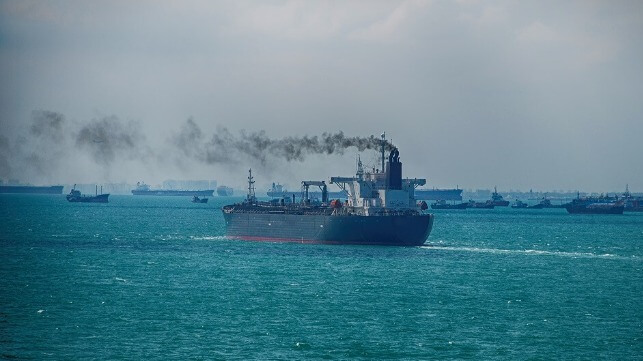Secondhand Vessel Pricing Shows Impact of the New CII Regulation

It is almost three months since the IMO’s CII (Carbon Intensity Indicator) and EEXI (Energy Efficiency Existing Ship Index) regulations came into force, which begs the question how the progress has been. The CII rating is calculated on the amount of CO2 emitted based on nautical mileages sailed and vessel’s deadweight tons.
Last week, the ship pricing consultancy Vessels Value released data assessing the impact of CII in the sale and purchase (S&P) market for vessels.
According to the Vessels Value data, variation is noticeable in liquidity depending on the CII band in which the vessel is operating. The vessels operating in band E (the lowest) have substantially lower liquidity then vessels operating in other bands. The operational CII rating is classified in bands of A, B, C, D or E, with A indicating superior quality and E representing inferior performance.
“CII is becoming increasingly influential in the sale and purchase market. At the moment, this is primarily manifesting in the liquidity of vessels. This is consistent with the expectation that vessels in band E will carry capital requirements, or will see their earnings potential reduce in the near future,” observed Vessels Value.
Vessels operating in CII band B were traded most frequently (12.8%), followed by those operating in band C (11.6%). According to Vessel Value analysis, these vessels represent arguably the lowest risk in relation to the incoming environmental regulations, as they have demonstrated their ability to operate in compliance with CII.
Interestingly, vessels in band A are traded slightly less frequently (9.2%), an indication owners may be reluctant to part with their most efficient vessels in an increasingly stringent regulatory environment.
However, it is important to note that the CII impact was far more pronounced in the tanker market. Just 3.3 percent of tankers operating in band E were traded in 2022, three times lower than average and almost five times lower than tankers in band B. This may be as a result of elevated public scrutiny associated with the oil majors.
In line with IMO regulations, CII ratings will be calculated annually, where a ship rated D for three consecutive years, or E for one year, will have to submit a corrective action plan to show how the required index of C or above will be achieved. Changing the speed of a vessel is the most straightforward way to improve the CII performance of that vessel.
In their analysis, Vessels Value also computed average speed adjustments needed for vessels to operate in the desired center band of C.
Band E vessels would need to reduce their voyage speed by around 12 percent while those in D need to decrease speed by 4%. For band A vessels, they can increase speed by 9 percent and still manage to operate in band C with no requirement for corrective measures. As for band B vessels, they can increase speed by 4% and remain in band C.
With the implementation of CII just a few months old, multiple trends in terms its impact are likely to be observed. Some analysts still hold that CII calculations as currently computed have substantial loopholes. Some of the potential problems that have been identified in the manner the CII is calculated include treatment of ballast and laden voyages as the same, penalizing a vessel for time spent at anchorage, and penalizing vessels for time spent in port loading or unloading.
